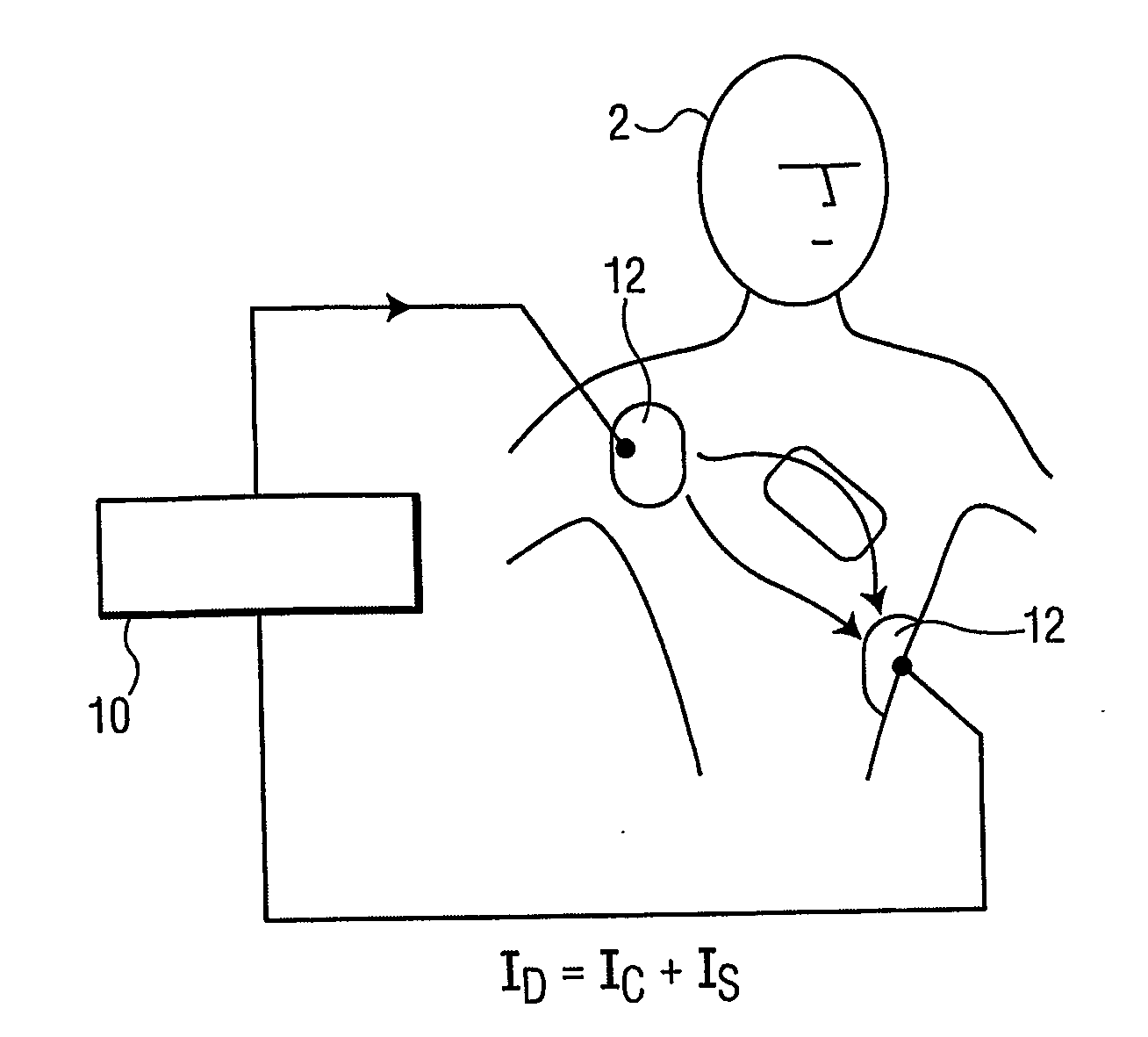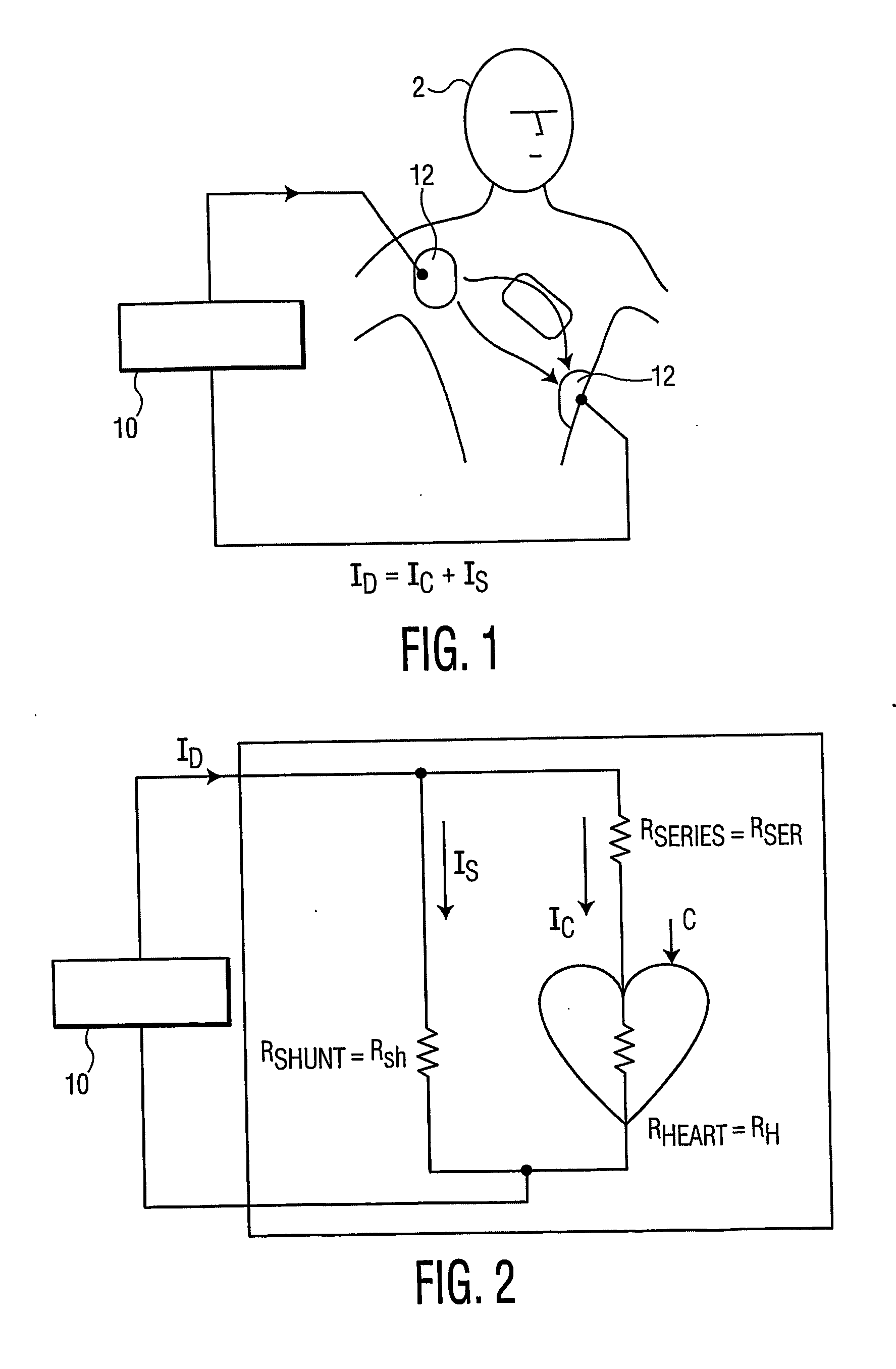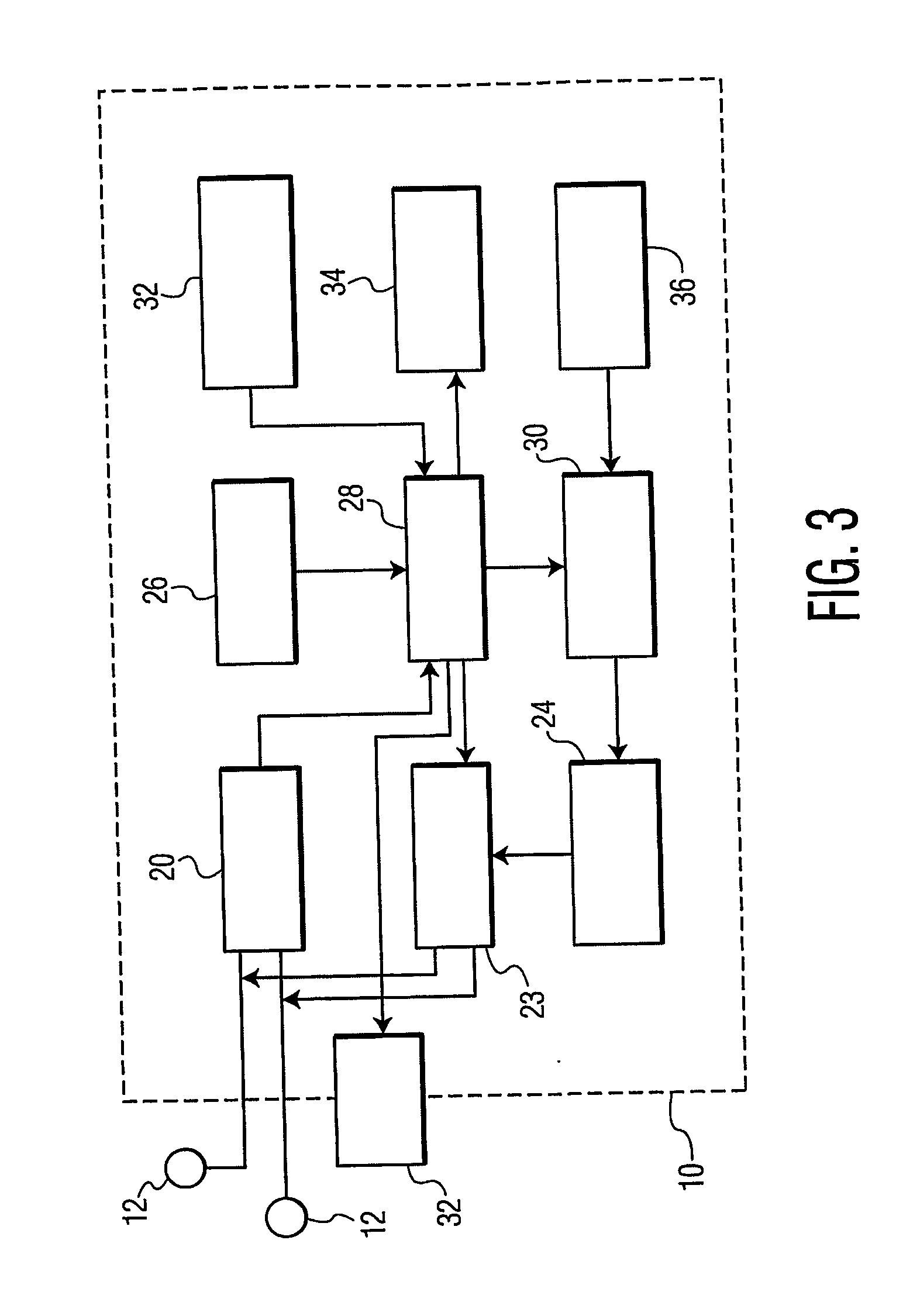Compensation for cardiac shunt currents during defibrillation
a technology of shunt current and compensating cardiac shunt current, which is applied in the field of equipment, can solve the problems that the design of prior-art external defibrillators has not fully addressed cardiac shunt current and the defibrillation effect of shunt current, and achieves the effect of simple, reliable and inexpensive implementation
- Summary
- Abstract
- Description
- Claims
- Application Information
AI Technical Summary
Benefits of technology
Problems solved by technology
Method used
Image
Examples
Embodiment Construction
[0020] In the following description, for purposes of explanation rather than limitation, specific details are set forth such as the particular architecture, interfaces, techniques, etc., in order to provide a thorough understanding of the present invention. For purposes of simplicity and clarity, detailed descriptions of well-known devices, circuits, and methods are omitted so as not to obscure the description of the present invention with unnecessary is detail.
[0021] Methods of delivering defibrillation or cardioversion shocks vary. Pads or paddles may be applied transthoracically in either an anterior-anterior (across the chest) position, or anterior-posterior (chest to back). Patients may range from large adults to small children, with a full range or transthoracic patient impedances. Further, defibrillation may be applied during surgery directly to the heart using internal defibrillation paddles. Each of these methods may require operating the defibrillator in different modes. ...
PUM
 Login to View More
Login to View More Abstract
Description
Claims
Application Information
 Login to View More
Login to View More - R&D
- Intellectual Property
- Life Sciences
- Materials
- Tech Scout
- Unparalleled Data Quality
- Higher Quality Content
- 60% Fewer Hallucinations
Browse by: Latest US Patents, China's latest patents, Technical Efficacy Thesaurus, Application Domain, Technology Topic, Popular Technical Reports.
© 2025 PatSnap. All rights reserved.Legal|Privacy policy|Modern Slavery Act Transparency Statement|Sitemap|About US| Contact US: help@patsnap.com



